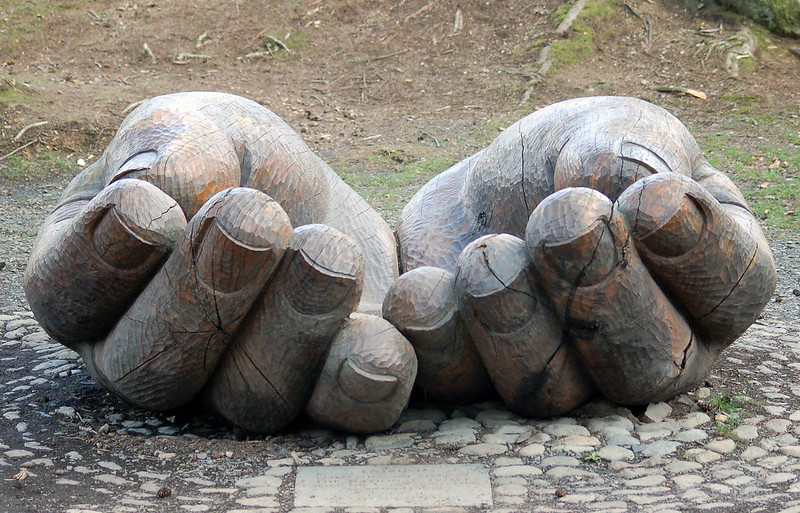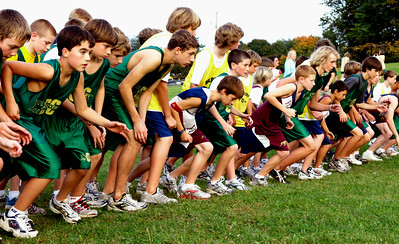Posts Tagged ‘Lessons Learned’
When is it innovation theater?
 When you go to the cinema or the playhouse you go you see a show. The show may be funny, it may be sad, it may be thought-provoking, it may be beautiful, and it may take your mind off your problems for a couple of hours; but it’s not real. Sure, the storyline is good, but it came from someone’s imagination. And because it’s a story, it doesn’t have to bound by reality. Sure, the choreography is catchy, but it’s designed for effect. Yes, the cinematography paints a good picture, but it’s contrived. And, yes, the actors are good, but they’re actors. What you see isn’t real. What you see is theater.
When you go to the cinema or the playhouse you go you see a show. The show may be funny, it may be sad, it may be thought-provoking, it may be beautiful, and it may take your mind off your problems for a couple of hours; but it’s not real. Sure, the storyline is good, but it came from someone’s imagination. And because it’s a story, it doesn’t have to bound by reality. Sure, the choreography is catchy, but it’s designed for effect. Yes, the cinematography paints a good picture, but it’s contrived. And, yes, the actors are good, but they’re actors. What you see isn’t real. What you see is theater.
If you are asked to focus on the innovation process, that’s theater. Innovation doesn’t care about process; it cares about delivering novel customer value. The process isn’t most important, the output is. When there’s an extreme focus on the process that usually means an extreme focus on the output of the process would be embarrassing.
If you are tasked to calculate the net present value of the project hopper, that’s theater. With innovation, there’s no partial credit for projects you’re not working on. None. The value of the projects in the hopper is zero. The song about the value of the project hopper is nothing more than a catchy melody performed to make sure the audience doesn’t ask about the feeble collection of projects you are working on. And, assigning a value to the stagnant project hopper is a creative storyline crafted to hide the fact you have too many projects you’re not working on.
If you are asked to create high-level metrics and fancy pie charts, that’s innovation theater. Process metrics and pie charts don’t pay the bills. Here’s innovation’s script for paying the bills: complete amazing projects, launch amazing products, and sell a boatload. Full stop. If your innovation script is different than that, ball it up and throw it away along with its producer.
If the lame projects aren’t stopped so better ones can start, if people aren’t moved off stale projects onto amazing ones, if the same old teams are charged with the innovation mandate, if new leaders aren’t added, if the teams are measured just like last year, that’s innovation theater. How many mundane projects have you stopped? How many amazing projects have you started? How many new leaders have you added? How many new teams have you formed? How will you measure your teams differently? How do you feel about all that?
If a return on investment (ROI) calculation is the gating criterion before starting an amazing project, that’s innovation theater. Projects that could create a new product family with a fundamentally different value proposition for a whole new customer segment cannot be assigned an ROI because no one has experience in this new domain. Any ROI will be a guess and that’s why innovation is governed by judgment and not ROI. Innovation is unpredictable which makes an ROI is impossible to predict. And if your innovation process squeezes judgment out of the storyline, that’s a tell-tale sign of innovation theater.
If the specifications are fixed, the resources are fixed, and the completion date is fixed, that’s innovation theater. Since it can be innovation only when there’s novelty, and since novelty comes with uncertainty, without flexibility in specs, resources, or time, it’s innovation theater.
If the work doesn’t require trust, it’s innovation theater. If trust is not required it’s because the work has been done before, and if that’s the case, it’s not innovation.
If you know it will work, it’s innovation theater. Innovation and certainty cannot coexist.
If a steering team is involved, it’s innovation theater. Consensus cannot spawn innovation.
If more than one person in charge, it’s innovation theater. With innovation, there’s no place for compromise.
And what to do when you realize you’re playing a part in your company’s innovation theater? Well, I’ll save that for another time.
“Large clay theatrical mask, Romisch-Germanisches Museum, Cologne” by Following Hadrian is licensed under CC BY-SA 2.0
The Giving Continuum
 I don’t give – regardless of the situation, there is no giving.
I don’t give – regardless of the situation, there is no giving.
I won’t give – in this situation, there is no giving.
I cannot give – there’s a reason for the non-giving.
I might give – there’s something about this situation that could result in giving.
I almost gave – there was strong consideration of giving.
I will give – in the future there will be giving.
I gave, but I got more – there was more getting than giving.
I gave, but I also got – there was a little getting, but far more giving.
I gave, but I got credit – getting credit helped, but there was giving.
I gave – in this situation, there was giving for the sake of giving.
I gave, and could spare it – there was surplus, and in this situation, there was giving.
I planned, saved, and gave – there was forethought to the giving.
I gave more than I saved – there was a lot of forethought, and far more giving.
I’ve found that the size of the gift doesn’t matter. What matters is the giving.
I’ve found that giving is for the giver.
I’ve found that giving is like getting twice.
I’ve found that giving creates givers.
Thanks for giving when you can.
Thanks for giving when it’s difficult for others to ask.
Thanks for giving when no one else sees the need.
Thanks for giving when no one is looking.
Wherever you are on the giving continuum, thanks for giving.
“Give a big hand to…..” by Andrew Pescod is licensed under CC BY-NC-SA 2.0
How To Know If You Are Trusted
When you have trust, people tell you the truth.
When you don’t have trust, people tell you what you want to hear.
When you have trust, people tell you when others tell you what you want to hear.
When you don’t have trust, people watch others tell you what you want to hear.
When you have trust, you can talk about the inconvenient truth.
When you don’t have trust, you can’t.
When you have trust, you can ask for something unreasonable and people try to do it.
When you don’t have trust, they don’t.
When you have trust, you don’t need organizational power.
When you have organizational power, you better have trust.
When you have trust, you can violate the rules of success.
When you don’t have trust, you must toe the line.
When you have trust, you can go deep into the organization to get things done.
When you don’t have trust, you go to the managers and cross your fingers.
When you have trust, cross-organization alignment emerges mysteriously from the mist.
When you don’t have trust, you create a steering team.
When you do have trust, the Trust Network does whatever it takes.
When you don’t have trust, people work the rule.
When you have trust, you do what’s right.
When you don’t have trust, you do what you’re told.
When you have trust, you don’t need a corporate initiative because people do what you ask.
When you don’t have trust, you need a dedicated team to run your corporate initiatives.
When you have trust, you don’t need control.
When you don’t have trust, control works until you get tired.
When you have trust, productivity soars because people decide what to do and do it.
When you don’t have trust, your bandwidth limits productivity because you make all the decisions.
When you have trust, you send a team member to the meeting and empower them to speak for you.
When you don’t have trust, you call the meeting, you do the talking, and everyone else listens.
When you have trust, it’s because you’ve earned it.
When you don’t have trust, it’s because you haven’t.
If I had to choose between trust and control, I’d choose trust.
Trust is more powerful than control.
Image credit — “Hawk Conservancy Trust, Andover” by MarilynJane is licensed under CC BY 2.0
Sometimes too much is just that – too much.
 When your best isn’t good enough, how do you feel? When your best isn’t good enough, what do you do? But more importantly, when your best isn’t good enough, what does that say about you?
When your best isn’t good enough, how do you feel? When your best isn’t good enough, what do you do? But more importantly, when your best isn’t good enough, what does that say about you?
If your best used to be good enough and now it isn’t, there are four possible explanations. 1.) Expectations increased and your performance is unchanged. 2.) Expectations increased and your performance increased less. 3.) Expectations increased and your performance decreased.
If expectations of your performance haven’t increased over last year, I want to work where you work because your company is an oasis (and an aberration). Since nearly all industries and occupations are governed by the unnatural mindset of growth-year-on-year-no-matter-what, it’s highly likely your performance expectations have increased. There’s no need to review this scenario.
In scenario one, your performance is unchanged. Why? Well, you may have tried to increase your performance but issues unrelated to work have consumed huge amounts of your emotional energy, and this new drain on your emotional energy consumed the energy you needed to increase your performance. A list of such issues includes global warming, deforestation, plastic in our water supply, COVID, political unrest, and the regular issues such as medical care for aging parents, death of your parents, inevitable health issues related to your aging. What does that say about you?
In scenario two, your performance increased, but the increase was insufficient. Maybe your performance would have increased quite a bit, but the special cause issues (COVID, etc.) along with the common cause issues (you and your parents get older every year) impacted your performance in a way that lessened the increase in your performance. Without the special causes, you would have met the increased expectations, but because of them, you did not. What does that say about you?
In scenario three, even though expectations increased, your performance decreased. In this case, it could be that political unrest and the other special causes teamed up with the common causes (stress of everyday life) to reduce your performance. What does that say about you?
In thermodynamics, there’s a law whose implications make it certain that there’s a limit to the amount of matter (stuff) you can put in a control volume (a defined volume that has a limit). That means that if every year you add air to a balloon, eventually it pops. Even the strongest ones. And when you extend this notion to people, it says that no matter how much pressure you apply to people, there’s a limit to what they can achieve. And if you apply pressure that overcomes their physical limit, they pop. Even the strongest ones. Or, maybe, especially the strongest ones because they try to take on more than their share.
People have a physical limit, and people cannot indefinitely support a mindset of growth-every-year-no-matter-what. No matter what, people will pop. It’s not if, it’s when. And add in the special causes of COVID, political unrest, and environmental problems and people pop sooner and cannot do what they did last year, no matter what.
And what does all this say about you? It says you are trying harder than ever. It says you are strong. It says you are amazing.
And what does it say about growth-every-year-no-matter-what? It says we should stop with all that, at least for a while.
Image credit — Judy Schmidt
It’s time to start starting.
 What do we do next? I don’t know
What do we do next? I don’t know
What has been done before?
What does it do now?
What does it want to do next?
If it does that, who cares?
Why should we do it? I don’t know.
Will it increase the top line? If not, do something else.
Will it increase the bottom line? If so, let someone else do it.
What’s the business objective?
Who will buy it? I don’t know.
How will you find out?
What does it look like when you know they’ll buy it?
Why do you think it’s okay to do the work before you know they’ll buy it?
What problem must be solved? I don’t know.
How will you define the problem?
Why do you think it’s okay to solve the problem before defining it?
Why do you insist on solving the wrong problem? Don’t you know that ready, fire, aim is bad for your career?
Where’s the functional coupling? When will you learn about Axiomatic Design?
Where is the problem? Between which two system elements?
When does the problem happen? Before what? During what? After what?
Will you separate in time or space?
When will you learn about TRIZ?
Who wants you to do it? I don’t know.
How will you find out?
When will you read all the operating plans?
Why do you think it’s okay to start the work before knowing this?
Who doesn’t want you to do it? I don’t know.
How will you find out?
Who looks bad if this works?
Who is threatened by the work?
Why do you think it’s okay to start the work before knowing this?
What does it look like when it’s done? I don’t know.
Why do you think it’s okay to start the work before knowing this?
What do you need to be successful? I don’t know.
Why do you think it’s okay to start the work before knowing this?
Starting is essential, but getting ready to start is even more so.
Image credit — Jon Marshall
Bad Behavior or Unskillful Behavior?
 What if you could see everyone as doing their best?
What if you could see everyone as doing their best?
When they are ineffective, what if you think they are using all the skills to the best of their abilities?
What changes when you see people as having a surplus of good intentions and a shortfall of skills?
If someone cannot recognize social cues and behaves accordingly, what does that say about them?
What does it say about you if you judge them as if they recognize those social cues?
Even if their best isn’t all skillful, what if you saw them as doing their best?
When someone treats you unskillfully, maybe they never learned how to behave skillfully.
When someone yells at you, maybe yelling is the only skill they were taught.
When someone treats you unskillfully, maybe that’s the only skill they have at their disposal.
And what if you saw them as doing their best?
Unskillful behavior cannot be stopped with punishment.
Unskillful behavior changes only when new skills are learned.
New skills are learned only when they are taught.
New skills are taught only when a teacher notices a yet-to-be-developed skillset.
And a teacher only notices a yet-to-be-developed skillset when they understand that the unskillful behavior is not about them.
And when a teacher knows the unskillful behavior is not about them, the teacher can teach.
And when teachers teach, new skills develop.
And as new skills develop, behavior becomes skillful.
It’s difficult to acknowledge unskillful behavior when it’s seen as mean, selfish, uncaring, and hurtful.
It’s easier to acknowledge unskillful behavior when it’s seen as a lack of skills set on a foundation of good intentions.
When you see unskillful behavior, what if you see that behavior as someone doing their best?
Unskillful behavior cannot change unless it is called by its name.
And once called by name, skillful behavior must be clearly described within the context that makes it skillful.
If you think someone “should” know their behavior is unskillful, you won’t teach them.
And when you don’t teach them, that’s about you.
If no one teaches you to hit a baseball, you never learn the skill of hitting a baseball.
When their bat always misses the ball, would you think the lesser of them? If you did, what does that say about you?
What if no one taught you how to crochet and you were asked to knit scarf? Even if you tried your best, you couldn’t do it. How could you possibly knit a scarf without developing the skill? How would you want people to see you? Wouldn’t you like to be seen as someone with good intentions that wants to be taught how to crochet?
If you were never taught how to speak French, should I see your inability to speak French as a character defect or as a lack of skill?
We are not born with skills. We learn them.
And we cannot learn skillful behavior unless we’re taught.
When we think they “should” know better, we assume they had good teachers.
When we think their unskillful behavior is about us, that’s about us.
When we punish unskillful behavior, it would be more skillful to teach new skills.
When we use prizes and rewards to change behavior, it would be more skillful to teach new skills.
When in doubt, it’s skillful to think the better of people.
Image credit — Steve Baker
Feel It All
 In these trying times, when 30% of Americans cannot pay their rent or mortgage, is it okay to put hard limits on the amount of work we do or to take good care of ourselves or to feel good about taking a vacation?
In these trying times, when 30% of Americans cannot pay their rent or mortgage, is it okay to put hard limits on the amount of work we do or to take good care of ourselves or to feel good about taking a vacation?
With remote work, we commute less, which should give us more time to take care of ourselves. But, do you have more time? If you do, what do you do with your freed-up time? Do you work more? Do you exercise? Do you worry? Do you take the time to feel grateful that you have a job?
When you work from home do you stop and make time to eat lunch? Do you shut off the work and just eat? Or, do you eat while you work? Do you take more time than when you are (or were) in the office or less? If you take more time to eat than when at the office, do you feel good that you’re taking care of yourself? Or, if you take less, do you feel good you’re doing all you can to prevent layoffs? Or, are you simply thankful you still have healthcare benefits?
When you work at home do you attend too many Zoom meetings? If so, what happens to all the work you can’t get done? Do you attend half-heartedly and multitask (work on something else)? Multitasking is disrespectful to the Zoom meeting and the other work, but do you have a choice? To get the work done, do you extend your workday to include your non-commute time? Or, do you decline Zoom meetings because other work is more important? Is it okay to decline a Zoom meeting?
Do you feel good when you set limits to preserve your emotional well-being? Do you preserve your well-being or do you do all you can to keep your job?
And now the tough one. Do you feel good when you go on vacation or do you feel sad because so many citizens have lost their jobs?
Thing is, it’s not or. It’s and.
It’s not that we must feel bad when we work during our non-commute time or feel good when we take care of ourselves or feel thankful for our jobs or feel bad because so many have lost theirs. It’s not or, it’s and. We’ve got to hold all these feelings at once. Tough to do, but we can.
It’s not that we feel bad when we work through lunch or feel good when we go for a walk or feel happy when we do all we can to prevent layoffs or we are thankful we have a job at all. It’s and. We’ve got to handle it all at once. We do what we can to prevent layoffs and take care of ourselves. We feel it all and make the choice.
We attend Zoom meetings and decline them and multitask. We process the three potential realities and choose. The bad ones we decline, the good ones we attend wholeheartedly, and for the others we multitask.
We feel great when we go on vacation and feel sad that others are in a bad way. We feel both at the same time.
Or, as word, is binary, black and white. But today’s realities are not black and white and there is no best way.
If you’re looking for some relief during these trying times, give “and” a try. Feel happy and sad. Feel grateful and scared. Feel it all and see what happens.
I hope it brings you peace.
Image credit — David
Are you doing what you did last time?
If there’s no discomfort, there’s no novelty.
When there’s no novelty, it means you did what you did last time.
When you do what you did last time, you don’t grow.
When you do what you did last time, there’s no learning.
When you do what you did last time, opportunity cost eats you.
If there’s no discomfort, you’re not trying hard enough.
If there’s no disagreement, critical thought is in short supply.
When critical thought is in short supply, new ideas never see the light of day.
When new ideas never see the light of day, you end up doing what you did last time.
When you do what you did last time, your best people leave.
When you do what you did last time, your commute into work feels longer than it is.
When you do what you did last time, you’re in a race to the bottom.
If there’s no disagreement, you’re playing a dangerous game.
If there’s no discretionary work, crazy ideas never grow into something more.
When crazy ideas remain just crazy ideas, new design space remains too risky.
When new design space remains too risky, all you can do is what you did last time.
When you do what you did last time, managers rule.
When you do what you did last time, there is no progress.
When you do what you did last time, great talent won’t accept your job offers.
If there’s no discretionary work, you’re in trouble.
We do what we did last time because it worked.
We do what we did last time because we made lots of money.
We do what we did last time because it’s efficient.
We do what we did last time because it feels good.
We do what we did last time because we think we know what we’ll get.
We do what we did last time because that’s what we do.
Doing what we did last time works well, right up until it doesn’t.
When you find yourself doing what you did last time, do something else.
Image credit — Matt Deavenport
Two Sides of the Equation
 If you want new behavior, you must embrace conflict.
If you want new behavior, you must embrace conflict.
If you can’t tolerate the conflict, you’ll do what you did last time.
If your point of view angers half and empowers everyone else, you made a difference.
If your point of view meets with 100% agreement, you wasted everyone’s time.
If your role is to create something from nothing, you’ve got to let others do the standard work.
If your role is to do standard work, you’ve got to let others create things from scratch.
If you want to get more done in the long term, you’ve got to make time to grow people.
If you want to get more done in the short term, you can’t spend time growing people.
If you do novel work, you can’t know when you’ll be done.
If you are asked for a completion date, I hope you’re not expected to do novel work.
If you’re in business, you’re in the people business.
If you’re not in the people business, you’ll soon be out of business.
If you call someone on their behavior and they thank you, you were thanked by a pro.
If you call someone on their behavior and they call you out for doing it, you were gaslit.
If you can’t justify doing the right project, reduce the scope, and do it under the radar.
If you can’t prevent the start of an unjust project, find a way to work on something else.
If you are given a fixed timeline and fixed resources, flex the schedule.
If you are given a fixed timeline, resources, and schedule, you’ll be late.
If you get into trouble, ask your Trust Network for help.
If you have no Trust Network, you’re in trouble.
If you have a problem, tell the truth and call it a problem.
If you can’t tell the truth, you have a big problem.
If you are called on your behavior, own it.
If you own your behavior, no one can call you on it.
Image credit – Mary Trebilco
Effectiveness at the Expense of Efficiency
 Efficiency is a simple measurement – output divided by resources needed to achieve it. How much did you get done and how many people did you need to do it? What was the return on the investment? How much money did you make relative to how much you had to invest? We have efficiency measurements for just about everything. We are an efficiency-based society.
Efficiency is a simple measurement – output divided by resources needed to achieve it. How much did you get done and how many people did you need to do it? What was the return on the investment? How much money did you make relative to how much you had to invest? We have efficiency measurements for just about everything. We are an efficiency-based society.
It’s easy to create a metric for efficiency. Figure out the output you can measure and divide it by the resources you think you used to achieve it. While a metric like this is easy to calculate, it likely won’t provide a good answer to what we think is the only question worth asking– how do we increase efficiency?
Problem 1. The resources you think are used to produce the output aren’t the only resources you used to generate the output. There are many resources that contributed to the output that you did not measure. And not only that, you don’t know how much those resources actually cost. You can try the tricky trick of fully burdened cost, where the labor rate is loaded with an overhead percentage. But that’s, well, nothing more than an artifact of a contrived accounting system. You can do some other stuff like calculate the opportunity cost of deploying those resources on other projects. I’m not sure what that will get you, but it won’t get you the actual cost of achieving the output you think you achieved.
Problem 2. We don’t measure what’s important or meaningful. We measure what’s easy to measure. And that’s a big problem because you end up beating yourself about the head and shoulders trying to improve something that is easy to measure but not all that meaningful. The biggest problem here is local optimization. You want something easy to measure so you cull out a small fraction of a larger process and increase the output of that small part of the process. The thing is, your customer doesn’t care about the efficiency of that small piece of that process. And, improving that small piece likely doesn’t do anything for the output of the total process. If more products aren’t leaving the factory, you didn’t do anything.
Problem 3. Productivity isn’t all that important. What’s important is effectiveness. If you are highly efficient at the wrong thing, you may be efficient, but you’re also ineffective. If you launch a product in a highly efficient way and no one buys it, your efficiency numbers may be off the charts, but your effectiveness numbers are in the toilet.
We have very few metrics on effectiveness. But here are some questions a good effectiveness metric should help you answer.
- Did we work on the right projects?
- Did we make good decisions?
- Did we put the right people on the projects?
- Did we do what we said we’d do?
- After the project, is the team excited to do a follow-on project?
- Did our customers benefit from our work?
- Do our partners want to work with us again?
- Did we set ourselves up to do our work better next time?
- Did we grow our young talent?
- Did we have fun?
- Do more people like to work at our company?
- Have we developed more trust-based relationships over the last year?
- Have we been more transparent with our workforce this year?
If I had a choice between efficiency and effectiveness, I’d choose effectiveness.
Image credit – Bruce Tuten
The Power of Prototypes
 A prototype moves us from “That’s not possible.” to “Hey, watch this!”
A prototype moves us from “That’s not possible.” to “Hey, watch this!”
A prototype moves us from “We don’t do it that way.” to “Well, we do now.”
A prototype moves us from “That’s impossible.” to “As it turns out, it was only almost impossible.”
A prototype turns naysayers into enemies and profits.
A prototype moves us from an argument to a new product development project.
A prototype turns analysis-paralysis into progress.
A prototype turns a skeptical VP into a vicious advocate.
A prototype turns a pet project into top-line growth.
A prototype turns disbelievers into originators of the idea.
A prototype can turn a Digital Strategy into customer value.
A prototype can turn an uncomfortable Board of Directors meeting into a pizza party.
A prototype can save a CEO’s ass.
A prototype can be too early, but mostly they’re too late.
If the wheels fall off your first prototype, you’re doing it right.
If your prototype doesn’t dismantle the Status-Quo, you built the wrong prototype.
A good prototype violates your business model.
A prototype doesn’t care if you see it for what it is because it knows everyone else will.
A prototype turns “I don’t believe you.” into “You don’t have to.”
When you’re told “Don’t make that prototype.” you’re onto something.
A prototype eats not-invented-here for breakfast.
A prototype can overpower the staunchest critic, even the VP flavor.
A prototype moves us from “You don’t know what you’re talking about.” to “Oh, yes I do.”
If the wheels fall off your second prototype, keep going.
A prototype is objective evidence you’re trying to make a difference.
You can argue with a prototype, but you’ll lose.
If there’s a mismatch between the theory and the prototype, believe the prototype.
A prototype doesn’t have to do everything, but it must do one important thing for the first time.
A prototype must be real, but it doesn’t have to be really real.
If your prototype obsoletes your best product, congratulations.
A prototype turns political posturing into reluctant compliance and profits.
A prototype turns “What the hell are you talking about?” into “This.”
A good prototype bestows privilege on the prototyper.
A prototype can beat a CEO in an arm-wrestling match.
A prototype doesn’t care if you like it. It only cares about creating customer value.
If there’s an argument between a well-stated theory and a well-functioning prototype, it’s pretty clear which camp will refine their theory to line up with what they just saw with their own eyes.
A prototype knows it has every right to tell the critics to “Kiss my ass.” but it knows it doesn’t have to.
You can argue with a prototype, but shouldn’t.
A prototype changes thinking without asking for consent.
Image credit — Pedro Ribeiro Simões


 Mike Shipulski
Mike Shipulski